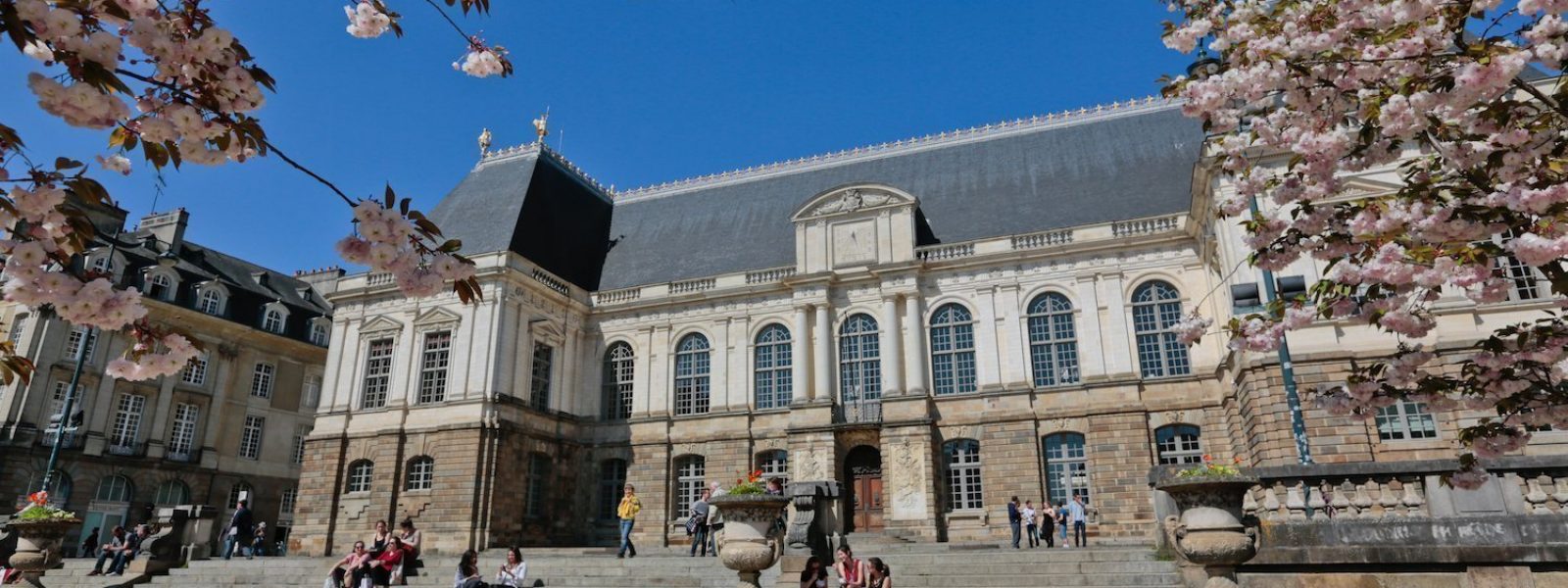Symbol of Brittany
The Parliament of Brittany is the most important heritage building in the city, one of the strongest symbols of Breton history, the seat of the regional appeal court and the Rennes site that attracts large numbers of tourists every year.

In 1532, the Duchy of Brittany was attached to the kingdom of France. The famous weddings of the Duchesses of Brittany to the kings of France, Anne with Charles VIII and Louis XII and daughter Claude with François I resulted in the treaty of union. There also followed the decision to create a Brittany Parliament in 1554.
The construction of the Palace began in 1615 and ended in 1655 according to plans by the architect Salomon de Brosse who also built the Luxembourg Palace in Paris. A century later, the king’s architect Jacques Gabriel imagined a royal place enveloping the statue of the ruling Sun King before the palace. While it lost its political prerogatives to the French Revolution, the Parliament of Brittany has been the seat of the appeal court since 1804.
1994, A devastating fire

In February 1994, the price of fish fell drastically. Fishermen decide to show their anger in Rennes during the visit of Prime Minister of the time, Edouard Balladur. The demonstration degenerated and clashes between fishermen and police erupt in the Place du Parliament where flares normally used on boats were launched. Some reached the roof. On the night of February 4 to 5 a fire started. The roof was destroyed, the structure collapsed and the attorney general’s office, library and thousands of records were destroyed. Rennes, the Bretons and the French were all shocked.
Rebirth from the ashes

The trauma was palpable however, the will to continue justice here was strong. After 5 years of work, the Parliament of Brittany reopened, restored by some remarkable work. The public then demonstrated genuine enthusiasm for the building and its decorations. In 1999, the Parliament of Brittany held court sessions once again but also allowed visits by the general public, after the signature of an agreement between the Office of Tourism and the Ministry of Justice.
Jewel of the seventeenth century

Spared from the flames thanks to a layer of refractory bricks placed under the roof, the Great Chamber and its coffered ceiling is a veritable gem. The painted canvases adorning the coffered ceiling are by Noel Coypel, mid seventeenth century, the room was designed by Charles Errard, painter for Louis XIV. Renowned artist of the time, he participated in designing early Versailles.
The Parliament of Brittany is one of very few buildings in France to have preserved a composition by Errard intact. It is therefore now considered a major work of the painter in Art History, as well as a unique example of the pictorial art of the seventeenth century. Visitors can also admire here a Gobelins tapestry representing the death of the constable Duguesclin, and a trace of the fire, intentionally preserved.

Xavier Beuzit, President of the Chamber
Xavier Beuzit first came here in 1970 as a law student. He returned as a judge in 1991. “The day after the fire a crowd stood silently. We collected any of our records that had remained intact and saved what we could. It was ridiculous. The loss of the building touched us deeply and we longed to know if we would return. Ten days later, the decision taken was affirmative, almost unanimously. When the building burned, it was only then that I realised how important it was for me; I had no idea that I was so attached. Since then, the Parliament has also become a cultural centre, both historical and architectural. We must not forget that we deal with important affairs at the court of Assizes. We must therefore continue to maintain the balance: it is primarily a place of justice.”

Régine Bouget, first Secretary to the president
“For me, it has been a great place to work since 1979. So on Friday, February 4, 1994, when the riots broke out, I was in the front row. It was war; people were throwing cobblestones, a bus was burning in the square and we were confined to the building . During the fire, I felt I was losing something that belonged to me, part of my home. Very quickly the staff got involved and organised, and when we were told that one day we would come back here, we were delighted! The works actually improved the comfort and functionality.


